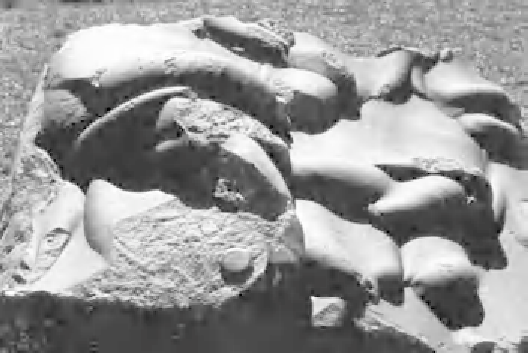Geology Reference
In-Depth Information
with in
Chapters 5
and
6.
As for overall joint set orientation and
spacing, discontinuity morphology is related to geological history
and mode of propagation, and surface features should be observed
and described. The description, analysis and interpretation of discon-
tinuity surface morphologies and the ways these can be linked to
interpretation of causative stresses, mechanisms and subsequent
evolution, is a relatively undeveloped area of scienti
c study called
fractography (Ameen, 1995). It is dif
c, that one type
of joint can be expected to have certain morphological characteristics
compared to others, but it is generally recognised that tensile fractures
are particularly rough and variable. Generally, roughness is charac-
terised by measurement. Waviness is the deviation from mean direc-
tion at the scale of metres. Smaller scale roughness (sometimes termed
second-order) is either measured objectively or estimated with refer-
ence to a scale called Joint Roughness Coef
cult to be speci
cient (JRC). Details are
given in ISRM (1978) and Barton (1973, 1990). Roughness is
described in the
field using terms such as stepped or slickensided
(British Standards Institution (1999)). At the smallest scale, surface
texture, together with mineralogy, will control basic friction.
Sedimentary bedding planes may show a variety of distinct mor-
phologies, as illustrated by Stow (2005). Many are
flat and planar
but others are rough. Ripple marks, as seen on beaches, are com-
monly preserved in sandstone; in turbidite surfaces, scour marks
can make them very rough, interlocking with the overlying layer
(e.g.
Figure 3.48).
Bedding surfaces can also be roughened by bio-
logical activity such as burrowing. Sometimes, bedding surfaces
are exposed, weathered and eroded before the overlying rocks are

